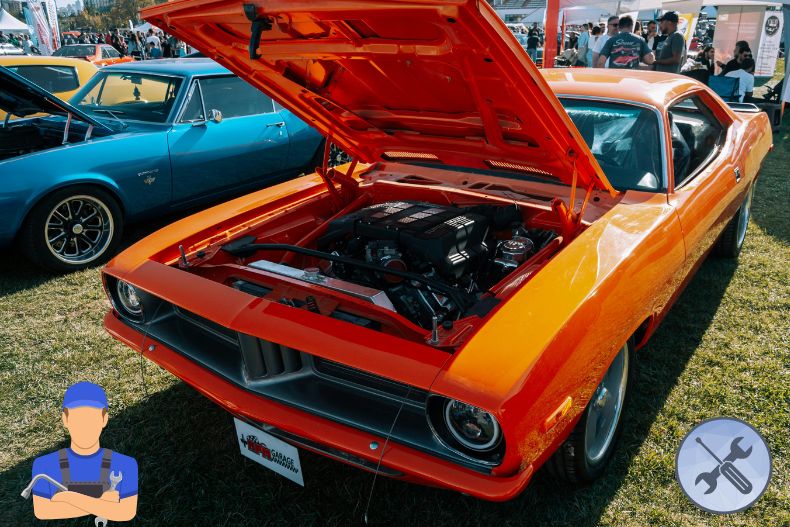There’s something undeniably iconic about a classic Mustang—the rumble of the engine, the sleek lines, and the nostalgia of American muscle. These cars never go out of style, making them a favorite among collectors and enthusiasts. For those passionate about restoration, turning this love into a profitable business is more than possible—it’s a growing opportunity.
With demand for authentic, high-quality Mustang restorations steadily rising, now is the perfect time to get in the driver’s seat. But before you dive in, there are key steps every founder should understand to build a shop that’s both respected and successful.

1. Understand the Market Before You Start
Classic Car Trends
The classic car market, especially for vintage Mustangs, has seen a resurgence in recent years. Car culture enthusiasts are drawn to the nostalgia and craftsmanship that come with restoring classic vehicles. This growing interest offers a promising opportunity for a business in this niche.
Target Customer Profile
Your primary customers will likely include collectors, hobbyists, and those nostalgic for the Mustang’s classic appeal. Understanding their specific needs—whether for a restoration that maintains originality or one with modern upgrades—is key to success.
Local vs. Online Reach
Consider whether your business will serve a local market or reach national (or even international) clients. Your approach to marketing and customer acquisition will differ depending on the scope of your target audience.
2. Develop a Strong Business Plan
Define Your Services
Decide what specific services your business will offer. This could range from full restorations to partial upgrades, sourcing rare parts, or creating custom builds. Specializing in a niche service can help you stand out in the competitive market.
Budget and Startup Costs
Restoring Mustangs requires significant investment in shop space, tools, parts inventory, and skilled labor. Make sure to plan your budget carefully and consider the upfront costs involved in setting up your operation.
According to the U.S. Small Business Administration (SBA), calculating accurate startup costs upfront helps prevent financial surprises. Account for rent, lifts, tools, insurance, and technician salaries.
Pricing Strategy
Choose between project-based pricing or hourly rates. Keep in mind the value of the restoration work you’re offering and set prices that reflect both your skill and the quality of work.
Legal Setup
Don’t forget about the business registration, insurance, and liability considerations. Ensuring proper legal documentation is essential for protecting your business and clients.
3. Build or Secure the Right Workspace
Location Requirements
Your workspace needs enough room for lifts, vehicle storage, and a safe working environment. Consider accessibility, safety compliance, and space to expand as your business grows.
Tools & Equipment
Invest in essential tools such as lifts, air compressors, a paint booth, and a full range of hand tools. These are necessary for quality restorations and can make or break your ability to deliver.
Use resources like the Automotive Service Excellence (ASE) website to help guide what tools are required for compliant, industry-standard restorations.
Zoning and Permits
Before setting up, research local zoning laws and obtain any required permits. Ensuring compliance with safety and environmental regulations is vital for long-term success.
4. Assemble a Skilled and Passionate Team
Who to Hire
To deliver high-quality restorations, hire specialists such as mechanics, bodywork experts, electricians, and upholstery professionals. Each plays a critical role in ensuring the final product meets the highest standards.
Culture of Excellence
Foster a culture of craftsmanship and authenticity in your shop. Your brand should reflect a commitment to detail and excellence, setting you apart from competitors.
Training & Certifications
Look for team members with certifications like ASE or vintage car repair courses. Ongoing training ensures your team stays current with industry advancements and restoration techniques.
5. Sourcing Authentic Parts and Materials
OEM vs. Aftermarket Parts
Know when to choose Original Equipment Manufacturer (OEM) parts for authenticity and when aftermarket parts are a more cost-effective option without sacrificing quality.
Reliable Suppliers
Form partnerships with trusted suppliers who specialize in classic car parts. Building a network of reliable sources ensures the authenticity and quality of materials used in every project.
Inventory Management Tips
Buy essential components in bulk to reduce costs, but be sure to track rare or hard-to-find parts. A solid inventory system will help you manage your resources efficiently.
6. Marketing Your Restoration Business
Build an Online Presence
Create a professional website showcasing your past builds, detailing the restoration process, and optimizing for SEO. This will help potential clients find you when searching for classic Mustang restorations.
Social Media
Use platforms like Instagram, Facebook, and YouTube to share behind-the-scenes footage, before/after videos, and restoration stories. Engage with your audience to build a loyal following.
Customer Testimonials & Referrals
Let your work speak for itself by showcasing customer testimonials and before/after photos. Positive word-of-mouth and referrals from satisfied customers are priceless marketing tools.
Networking
Participate in car shows, local events, and classic car clubs to expand your network, build relationships, and increase visibility in the vintage car community.
7. Delivering Exceptional Customer Experience
Transparent Communication
Maintain open lines with clients by providing clear timelines, accurate cost estimates, and regular progress updates throughout the restoration process.
Education & Engagement
Take the time to educate clients about each stage of the restoration process. Helping them understand why certain decisions are made fosters trust and strengthens relationships.
Post-Project Support
Offer valuable post-restoration advice on maintenance and care. Providing follow-up support ensures that clients feel cared for long after the job is done, leading to repeat business.
Final Thoughts Building a Legacy, Not Just a Business
Restoring Mustangs is more than just a business—it’s about preserving automotive history and craftsmanship. By combining passion with meticulous planning, your restoration shop can establish a respected reputation in the classic car world. Focus on quality, stay dedicated, and watch your business evolve into a legacy that lives on through each restored car.











